|
Getting your Trinity Audio player ready...
|
Digitization of business is taking many forms – from automating manual processes or enhancing online customer experiences with virtual agents, to leveraging data across an organization to make faster, more informed decisions. The Microsoft Power Platform is on many IT leader’s minds as they consider the software solutions to support their digitization goals.
But what exactly is the Power Platform? What capabilities and advantages does it offer? And how do you know if it’s the right solution for your business? Let’s dive in.
What Is The Microsoft Power Platform?
Microsoft Power Platform is a group of products to enable rapid, low code application development, business process automation, data analysis and more. It empowers businesses to build and roll out complex, enterprise grade applications quicker.
84% of enterprises have turned toward low-code for its ability to reduce strain on IT resources, increase speed-to-market, and involve the business in digital asset development. Forrester
All Power Platform tools are built on Azure (Microsoft’s cloud service), which means they benefit from enterprise-grade security, certifications, and administrative controls. Microsoft is investing research and resources into the platform, which gives businesses access to the latest tools and technologies. For example, it has an AI Builder that lets you build and use AI models in Power Apps and Power Automate without needing advanced coding or data science skills. It also has an extensive library of App Connectors which allow you to connect third party apps for use within your Microsoft applications. And if a connector doesn’t exist, we can easily build one.
The Microsoft Power Platform is still expanding and evolving, which puts a powerful development roadmap at your fingertips. And, it has so many integrated tools, customers may ask us about a specific feature without realizing it’s part of a larger solution that opens up a broader world of opportunities. The Power Platform is made up of four main elements: Power Automate, Power Apps, Power BI and Power Virtual Agent. Let’s explore each in more detail.
What is Included in the Power Platform?
Power Automate
Definition: Power Automate is a service that helps you create automated workflows between your favorite apps and services to synchronize files, get notifications, collect data, and more.
What It Does: Repetitive, manual tasks can be automated saving time. You might remember a tool called Flow; this updated version has templates to help staff map workflows they want to automate. Think about a timesheet that has the same data entered every day. A workflow can be created to automatically fill in repetitive parts of that form.
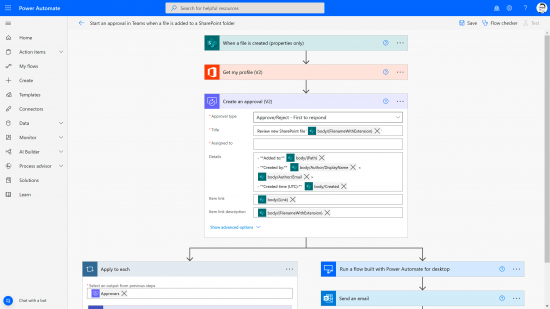
Power Apps
Definition: Power Apps are a suite of apps, services, and connectors, as well as a data platform, that provides a rapid development environment to build custom apps for your business needs.
What They Do: Use business logic and workflow templates to quickly create enterprise-class apps that connect to data stored in the platform or in cloud/on-prem data sources. As an example, businesses used Power Apps to quickly create COVID tracking apps and then used Power Automate to create a workflow based on data entered into that app.
There are different types of Power Apps including Canvas Apps and Model Driven Apps. Each type has different benefits so it’s important to take some time to understand the differences and select the type of app that’s the right fit for your specific requirement.
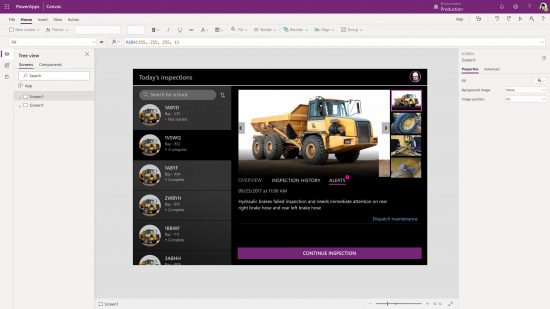
Power BI
Definition: Power BI is a collection of software services, apps, and connectors that work together to turn your unrelated sources of data into coherent, visually immersive, and interactive insights.
What It Does: Once you digitize and automate forms, businesses will want to do more with the information they’re capturing. Power BI lets you connect data sources so you can analyze and visualize the information. And you’re not limited to data residing in one specific application or data source. Power BI can bring together a wide range of data from disparate sources, which is great for businesses that are running different applications or have legacy applications.
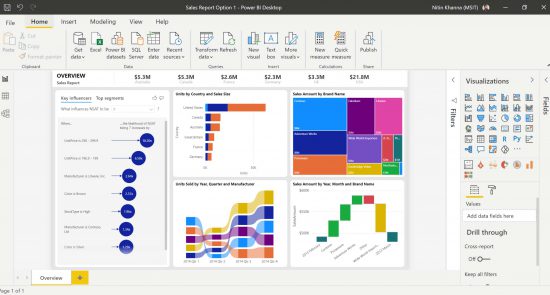
Power Virtual Agent
Definition: Power Virtual Agents let you create powerful chatbots that can answer questions posed by your customers, other employees, or visitors to your website or service.
What They Do: They can be simple automated chatbots that refer questions to the right department or more complex virtual agents that become the first line of contact for the business. Power Virtual Agents use advances in Natural Language Processing (NLP) to help enhance queries and responses. This technology is continuing to improve and evolve.
Fair warning: this is not a plug and play kind of solution. The more time you invest mapping a potential conversation, the better the interaction, and we can see this continuing to improve as NLP and AI continues to advance.
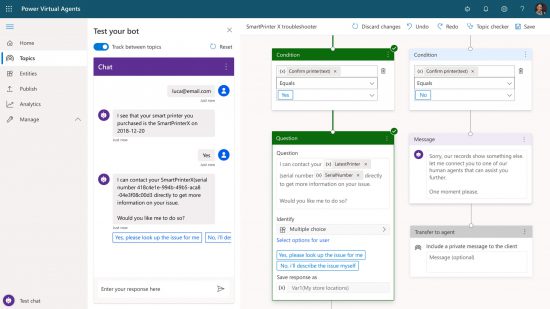
Connecting it all with Dataverse
Data is critical to every business today – if you can access it and analyze it effectively. And, since we often have data coming from a range of different sources, that cohesive view can be a challenge.
Enter the Dataverse (previously known as the Common Data Service). Power Platform tools are connected to the Dataverse natively or through app connectors. This gives organizations access to an easy to use, easy to manage, compliant, scalable and secure data service—and a single, reliable source of data.
Dataverse can even map data from external sources in a common data model. Once the data is mapped in a consistent way, businesses can share data across applications and processes, bringing together disparate data sources for even more powerful insights and decision-making.
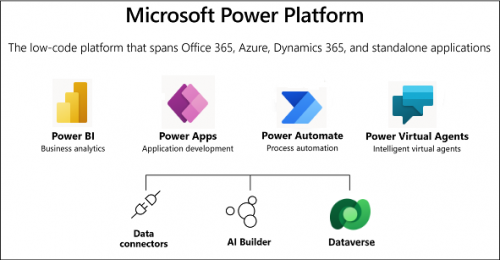
Is the Power Platform Right for You?
Businesses looking to automate, analyze data or build a new software solution have more options than ever. As we’ve explored previously, the decision between custom and off-the-shelf software, and using low-code development platforms as a foundation, includes a lot of analysis of your specific business needs and goals. There are times when building an application from scratch makes the most sense because:
- Your software is your business, such as Woodbine or Ixact Contact.
- You have a unique business or requirement.
- You operate using very rigid processes that would be difficult to change.
- You want to own the IP and see the value your software adds to your business.
- It’s important to control the feature roadmap.
There are other situations when customizing a platform is a more suitable solution, such as:
- Digitizing and automating common business workflows to help increase efficiency.
- You’re looking to modernize or update a legacy system.
- Time is a factor and you want to accelerate development and adoption.
- You know your business is going to grow, and while you might not need all the functionality today, you see the advantages of a deep toolset for the future.
- You prefer to have security and hardware managed for you so you can reduce the burden on IT.
- You like the platform developers doing the research and updating so you benefit from the latest technologies. This can be a double-edged sword when a feature you use is discontinued or changed.
- You want to transition from up front capital expenses to monthly operating expenses (licensing fees).
By 2024, low-code application development will be responsible for more than 65% of application development activity. Gartner
Deciding What’s Best for Your Business
Hopefully you have a better understanding of the Power Platform than you did 10 minutes ago. Since many businesses already use many Microsoft office solutions, it can make sense to keep it all in the family. And the promise of rapid app development and distributing responsibilities to business units and individuals outside of IT, is a tempting proposition.
But there are many factors that should influence your decision. While the interfaces used to develop solutions are definitely more user-friendly, and they are lauded as solutions that are easy for the citizen developer to deploy, configuring and customizing low code platforms isn’t as easy as it may seem. If not handled properly, they can present business risks. But we’ll dive into the pros and cons of citizen development next time.